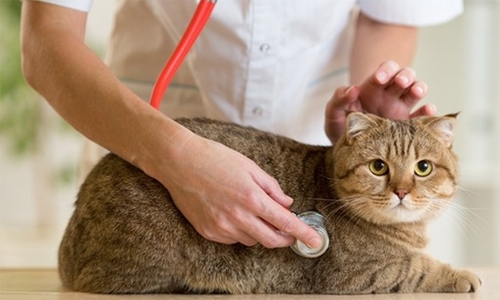PET VET - Vomiting in cats
Vomiting is the forceful ejection of the digested food or fluids `of the stomach and upper small intestine. Common signs are excessive drooling, retching, and forceful contractions of the abdominal muscles and the diaphragm. Whereas regurgitation is the passive process of expulsion of undigested food and fluid which have a cylindrical shape reflecting the shape of the esophagus. Coughing or difficulty breathing are more often associated with regurgitation than with vomiting.
When a cat has been vomiting for only a short time (less than 3 to 4 days) without signs of other diseases requires withholding food and limiting access to water for 24 hours. Cats with kidney or heart disease may require a hospital stay with intravenous fluid treatment during this time. If the vomiting has stopped after 24 hours, the cat may be offered small amounts of water. If no further vomiting occurs, feeding can usually be resumed slowly.
Long-term vomiting occurs more often than once or twice daily, and vomiting accompanied by blood, abdominal pain, depression, dehydration, weakness, fever, or other adverse signs requires a detailed examination by your veterinarian. This may include blood and urine tests, abdominal x-rays, endoscopic evaluation of the stomach and small intestine to determine the cause of the vomiting. Vomiting can be caused by digestive system disease, kidney or liver failure, pancreatitis, or nervous system disorders (including ingestion of poisons).
As cats groom themselves they swallow some of the loose hair from their coat. Hair cannot be digested and will stick together to form a lump or hairball. Often cats will vomit up this hair ball. . Longhaired breeds are at greater risk. Very rarely surgery is required to remove this hairball. With frequent brushing, some medications and commercially available diets and treats we can prevent the formation of hairballs.
Related Posts

